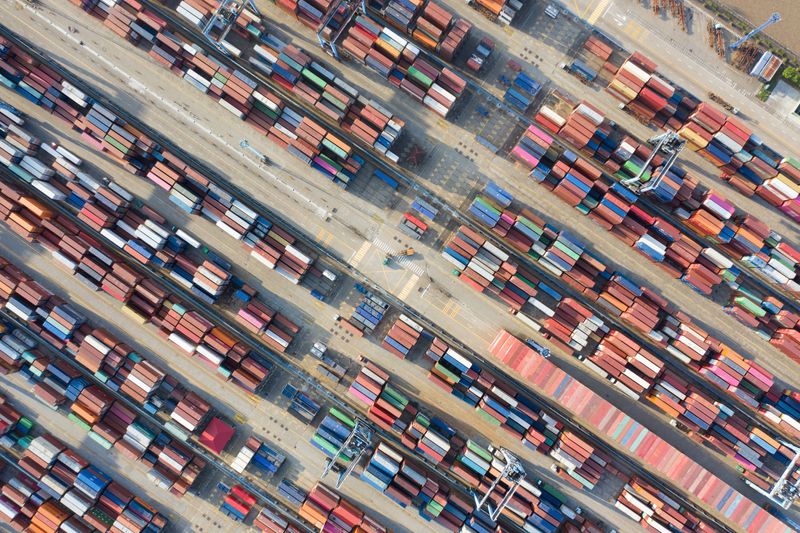BEIJING (Reuters) -China's October factory activity grew at its fastest pace in four months as new orders rose and disruptive power shortages started to ease, but input costs remained high while export orders declined further, a private survey showed on Monday.
The Caixin/Markit Manufacturing Purchasing Managers' Index (PMI) rose to 50.6 in October - its highest level since June. Economists in a Reuters poll had expected the index to remain unchanged from September at 50.0. The 50-mark separates growth from contraction on a monthly basis.
The relative strength in the Caixin PMI contrasts with an official survey released on Sunday which showed China's factory activity shrank for a second month.
Analysts attributed the divergence to the different samples and survey periods. But even the more bullish Caixin survey, which focuses on smaller firms in coastal regions, showed a sub-index for output showed production shrank for the third consecutive month and at a faster rate than in September.
New export orders fell for a third straight month, countering a rise in a sub-index for new orders to 51.4 from 50.8 in September.
"The Caixin manufacturing PMI managed to reflect the partial normalisation of power supply in October," said Ting Lu, chief China Economist at Nomura, although he added it failed to capture the massive power blackouts in September.
"We need exercise caution when interpreting both the official and Caixin PMI due to their imperfect performance."
This year, China's sprawling manufacturing sector has been tested by COVID-19 outbreaks, higher costs, production bottlenecks, and more recently, power rationing.
A power crunch triggered by a shortage of coal, tougher emissions standards, and strong industrial demand had led to widespread curbs on electricity usage, hurting factory output.
But the situation began to improve in October under heavy government intervention.
Still, input prices rose at their fastest pace since December 2016, partly due to higher energy and transport costs, while gains for price charged also accelerated to the highest since May, adding to concerns about the emergence of stagflation.
To help struggling manufacturers, China's cabinet said on Wednesday that the government will defer some taxes for manufacturers for three months from November.
Wang Zhe, senior economist at Caixin Insight Group, warned that a new wave of COVID-19 outbreaks in many central and western regions since late October could deal a fresh blow to economic activity.

"It is critical to balance the goals of controlling the outbreaks and maintaining normal economic activity," said Wang.
China's economic growth is likely to slow to 5.5% in 2022 from an expected expansion of 8.2% this year, a Reuters poll showed.